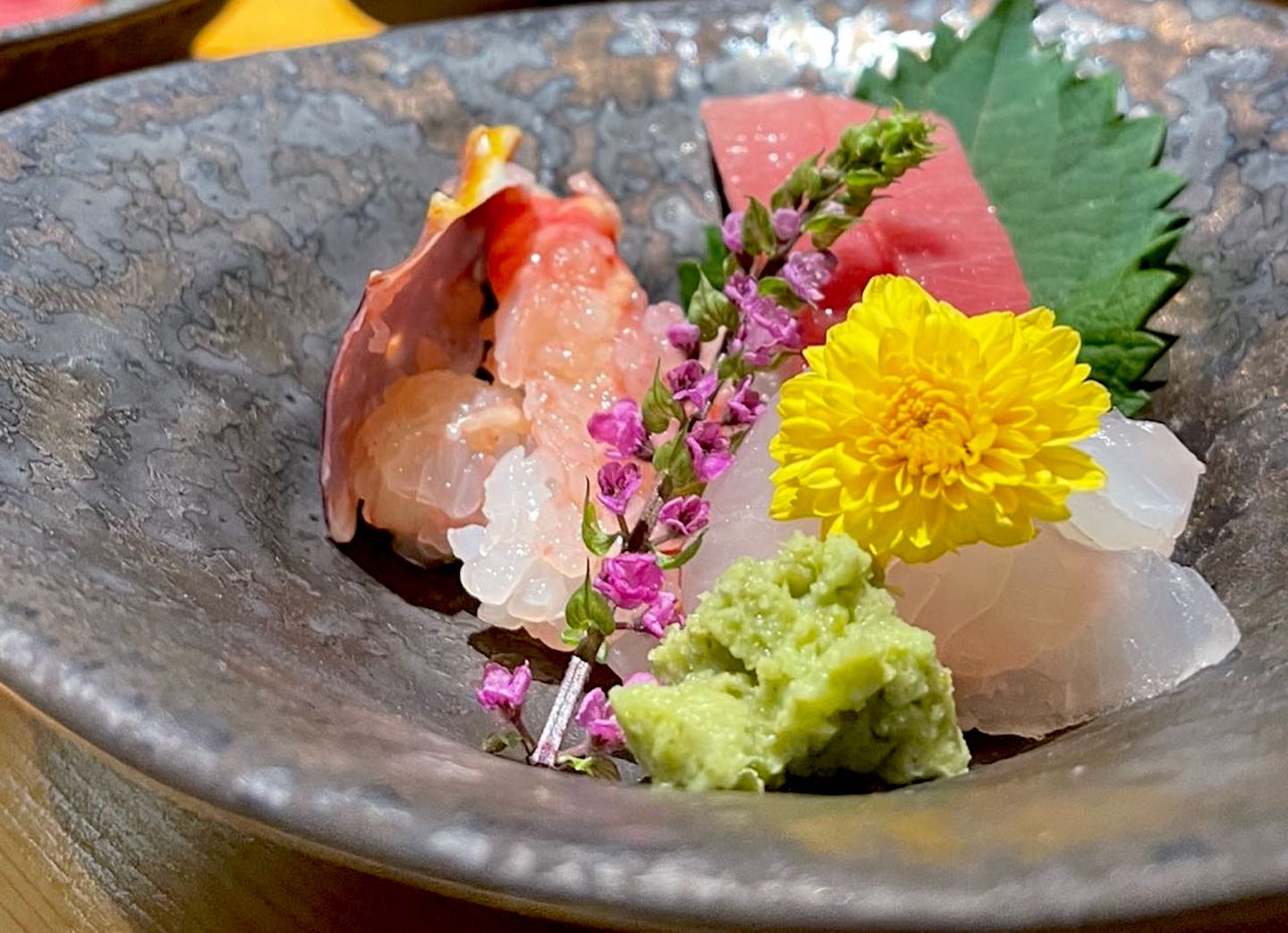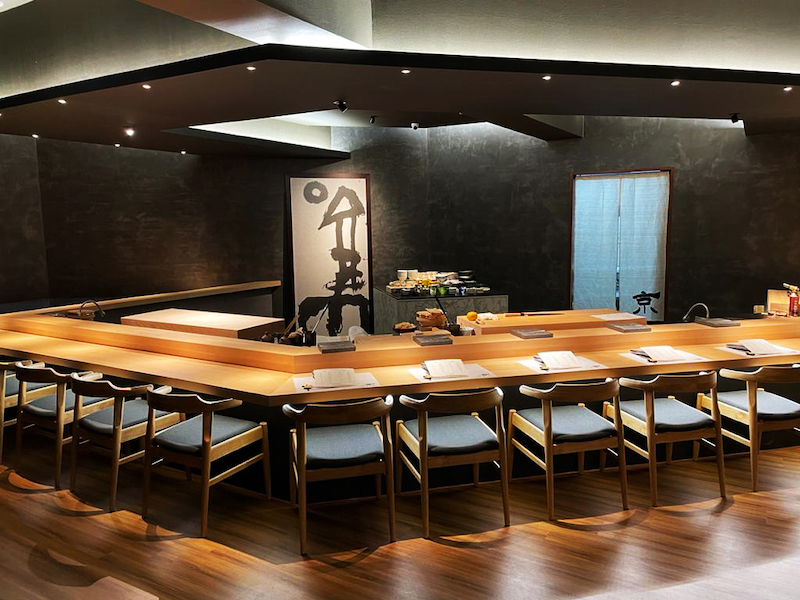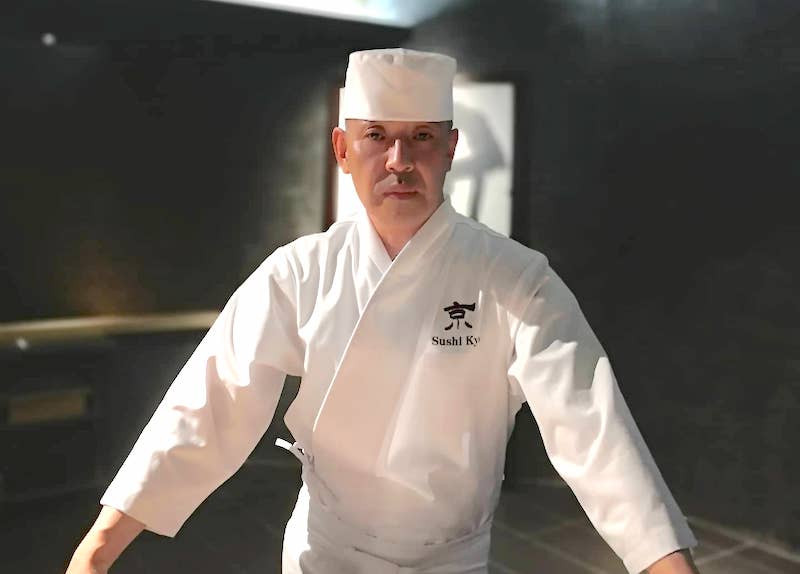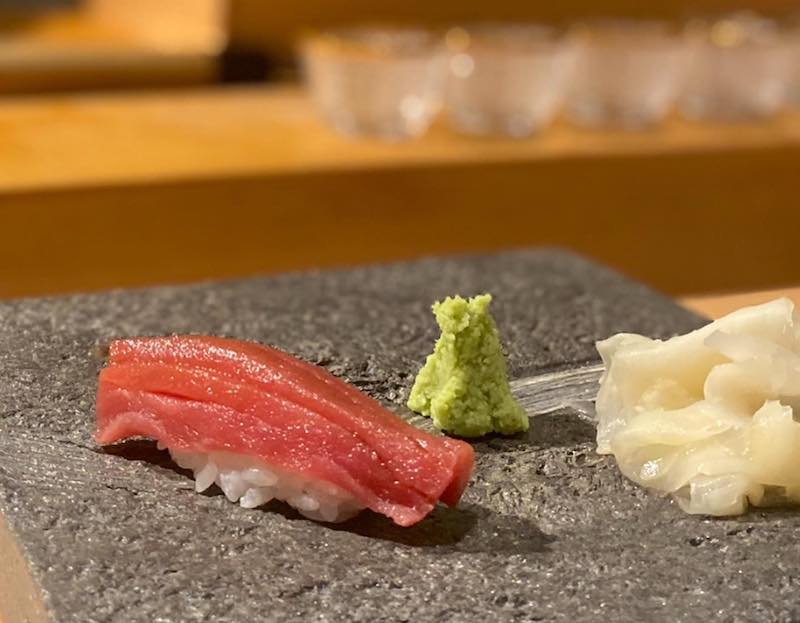
Sushi Kyo has been attracting a steady stream of fans hungry for just-sliced fish and sushi (All photos: Sushi Kyo)
The Japanese are obsessed with food that barely knows the application of heat. Sushi and sashimi may well be the apotheosis of a cuisine underpinned by freshness and simplicity. Seasonal eating is another notion that has attained near-sacred status in the Land of the Rising Sun and something the Japanese have elevated to an art form. Those who have experienced dining at the celebrated tables of Tokyo and Kyoto — the latter being the birthplace of kaiseki-style dining, a style noted for its finesse and subtle pageantry whereby guests are treated to a veritable succession of small, perfectly formed and season-dictated plates — would nod their head in reverential agreement.
sushi_kyo.jpeg

One new player in this arena is the bijou Sushi Kyo. Tucked away in a quiet cul-de-sac in Mont Kiara, the 16-seater restaurant had a slightly rough birth, opening for business a week before the third Movement Control Order was imposed. It only reopened in September and has been attracting a steady stream of fans hungry for just-sliced fish and sushi shaped mere seconds by the itamae-san before being devoured.
Named after the Japanese word for “city”, Sushi Kyo is presided over by Shimada Takanori, a native of Kumamoto who most recently worked in the sushiyas of Ginza. While there are specific course menus for lunch and dinner, the team is more than happy to accommodate special requests. Beef, for example, is not normally offered but special A5 wagyu menus may be arranged, as may be a crab-only omakase, with prior planning. We were eavesdropping and got wind of an upcoming private dinner party set at an eye-watering RM3,800 per head. But if your tycoon buddy or banker isn’t buying, treat yourself instead to any of the existing menus, all of which are more than pleasing.
chef.jpeg

Assailed by sushi withdrawal symptoms, we popped by one evening to try the Botan dinner menu (RM580) and Tsubaki sushi menu (RM480). Both proffered two kinds of appetisers; the lightest and most custardy chawanmushi ever; a small tempura basket containing crisp morsels of maitake mushroom, chestnut, shishito pepper and prawn — all to be eaten with sansho salt; six and eight pieces of nigirizushi respectively; a hand roll; miso soup and dessert. The primary difference was Botan’s two chef’s specials. For that evening, it was aburi tuna with ikura and a platter of grilled tarabagani leg and gindara.
Just as summer fish is characterised by subtlety of flavour, winter swimmers are all about fatty richness — a factor prized by connoisseurs. Buri (amberjack) becomes plump and pleasing, offering the diner its flavoursome flesh for a short but sweet season. Hirame (olive flounder) gains weight and flavour accordingly while kohada (gizzard shad) is said to be at its most delicious in winter. Even certain shellfish like akagai (blood cockles) and Ezo awabi (abalone) are at their best and sweetest when temperatures drop and the waters turn icy.
Here, Kyo’s tare-glazed selection did not disappoint, with a selection that paid homage to the season. First, the belly was prepared with a series of elegant appetisers that included the classic persimmon shira ae with chrysanthemum leaves and negitoro tartare. This then segued into the nigirizushi: akami hon-maguro, hirame, chutoro, otoro, tai and saba, and ended with pieces-de-resistance like uni nigirizushi and a particularly divine tuna temakizushi, eaten wrapped around the crispiest seaweed shawl, truly a pleasure no delivery or takeaway order can ever offer.
nigiri.jpeg

Although Takanori-san speaks almost no English, he is all smiles and very engaging, somehow even managing to convey, via vigorous gesticulating, the message to eat the chutoro and otoro nigirizushi neta (topping) side down in order to maximise the flavour profile on the palate. Those watching their waistlines may also request less shari (sushi rice) when it comes to assembly time, and guests will find Takanori-san most affable and accommodating. A word of warning, though: do not ever waste the rice. Etymologists will tell you shari stems from the Sanskrit word sarira, for “Buddha’s bones”, denoting the reverence each and every precious grain commands.
Anthony Bourdain may have been the main culprit perpetuating the myth that one should never order fish on a Monday but we visited Sushi Kyo twice — on Mondays, despite knowing its shipment arrives on Wednesdays and Fridays — and found absolutely no fault whatsoever.
Another point in Sushi Kyo’s favour is its high regard for plating, making each course a feast for all the senses. No self-respecting Japanese chef would ever dream of serving food simply, of course, but Sushi Kyo takes things a notch higher with its array of beautiful plates and bowls. For those who still feel uneasy about eating with others, there is a private room that seats 10, although it can be booked out with a minimum spend of RM3,000.
So, if you like the cut of Sushi Kyo’s jib, it might also interest you to know that its owner James Goh, founder of the popular Levain Bakery, is in the midst of relocating his equally popular Miyataki Sanuki Udon restaurant from within One Utama’s Isetan department store to become Sushi Kyo’s new neighbour within the month.
Sushi Kyo, LG2-1, Residensi Duta Kiara 7, Jalan Duta Hartamas, Dutamas, KL. 03 6413 4133. Lunch, noon-3pm; dinner, 6-10.30pm. Closed on Tuesdays.
This article first appeared on Nov 1, 2021 in The Edge Malaysia.


